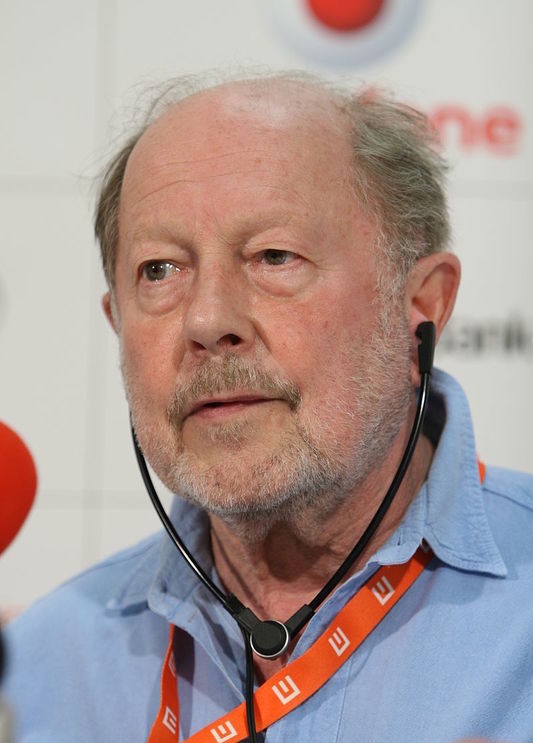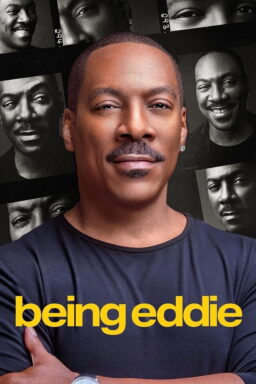Sometimes you get lost in a memory so intense that when you emerge, you aren’t sure if you’ve been spacing out for a second or a minute. That’s where Nicolas Roeg’s cinema lived.
Roeg, the British cinematographer-turned-director who died Friday at 90, was one of the least celebrated influential filmmakers of the last half-century. In terms of the techniques that he helped refine, he’s as important as Orson Welles or Stanley Kubrick. And if you judged contemporary cinema purely in terms of the grammar that it has borrowed and retained from past masters, you might have to give Roeg the edge, because of how he told stories.
Roeg is best known for an impressive run of intricately constructed, heady, enigmatic, sometimes sexually explicit films. It started with 1970s “Performance,” about a gangster who takes refuge with a rock star, and continued through “Walkabout,” “Don't Look Now,” “The Man Who Fell to Earth” and “Bad Timing: A Sensual Obsession.” Although Roeg’s career never recaptured that early luster (one could argue that the age of blockbuster cinema failed him rather than the other way around) he continued to produce notable works in the ’80s and ’90s. Highlights include “Eureka,” “Insignificance,” “Castaway” (not the Tom Hanks one!), “The Witches” (a rare sorta-kid friendly-but-not-really feature), and the 1993 TV-movie of Joseph Conrad’s “Heart of Darkness,” starring John Malkovich as Kurtz and Tim Roth as Marlow.
Roeg’s directorial style spirals through past and present, experience and memory, making intellectual as well as narrative connections through images and cuts. Watching them, you aren’t always sure where one begins and the other ends, and there are long stretches where you might wonder “Why is he showing me this?” (There’s always a reason, whether you agree with it or not.) Calling his best work “flashback cinema” oversimplifies the effect of Roeg’s editing. The movies are assembled according to emotional logic. They rarely follow the standard three-act structure so beloved by commercial cinema. A lot of the time they give more weight to what would ordinary be considered digressions. They aren’t afraid to find an interesting moment and live in it, until it’s time to go somewhere else.
This kind of cinema was pioneered by 20th century experimental filmmakers like Luis Bunuel and Salvador Dali, Maya Deren and Kenneth Anger, and was imported to feature-length cinema via the French New Wave. The invasion of elliptical storytelling probably began in earnest with 1959’s “Hiroshima, Mon Amour,” which intercut a present-day affair between a Japanese man and a French woman with flashbacks to their tragic pasts. It continued in the ’60s in films by Jean-Luc Godard and Roeg’s fellow Brit Richard Lester (whose features include “Petulia,” Roeg’s last movie as a cinematographer, and the project that introduced him to future “Don’t Look Now” co-star Julie Christie). Action filmmaker Sam Peckinpah also began swimming in these time-shifting waters, using a mix of fast and slow motion in movies like “The Wild Bunch” and “Straw Dogs” to create fleeting oases of eternity within split-second violent acts.
By the time Roeg moved into the directors chair, there was a rich and still-developing vocabulary to draw on. He mastered it right out of the gate with “Performance.” Co-directed with Donald Cammell, starring James Fox as a gangster on the run and young Mick Jagger as the reclusive rocker with whom he moves in and shares a mind-meld, “Performance” was shot and edited in 1968; its controversial content and freewheeling, at times alienating storytelling kept it out of theaters for two years. “Performance” was so mystifying to its releasing studio, Warner Bros.—and so alarming because of its explicit sex and violence; one studio executive’s wife reportedly threw up during a pre-release screening—that they ordered it re-edited. But despite its rocky start, the film found many admirers, particularly among fellow filmmakers, and cinephiles who had embraced the counterculture influence showcased in 1969’s “Easy Rider.”
Roeg bounced back with 1971’s “Walkabout,” starring Jenny Agutter and his own son Luc as English children left whose father commits suicide and abandons them in the Australian outback, and are saved by a young Aboriginal (David Gulpilil). The entire tradition of quasi-mystical, time-and-space-tripping outback dramas—and important part of Australian cinema, as seen in the films of Fred Schepisi (“The Chant of Jimmie Blacksmith,” “A Cry in the Dark“) and Peter Weir (“Picnic at Hanging Rock,” “The Last Wave”) might have originated here. “Don’t Look Now,” Roeg’s trippy, sensual, horrifying adaptation of the Daphne du Maurier story, starring Christie and Donald Sutherland, was arguably his first masterpiece—its signature flourishes, such as the menacing, small figure dressed in red, and the intercutting of a sex scene and a moment before or after, are imitated to this day.
His next film was a classic in a different genre, science fiction: 1975’s “The Man Who Fell to Earth,” starring David Bowie as an extraterrestrial who voyages to Earth seeking water for his drought-stricken planet, only to succumb to the inventor-businessman personality that he devised and end up trapped and miserable. A number of subsequent dark, brainy science fiction features—including “Under the Skin“—owe it a debt. As in his other 1970s classics, the merger of allusive editing and exact yet fluid cinematography gave it a feeling of hypnotic completeness. At its most unsettling and mystifying, the movie feels as if it might itself the the product of alien intelligence.
Roeg’s next three features, all made in collaboration with producer Jeremy Thomas, are as peculiar and original as his ’70s work, though smaller and quieter-seeming. “Bad Timing” stars Art Garfunkel (Roeg loved working with musicians) as a psychiatrist in a destructive relationship with a younger woman (Theresa Russell, who would later marry Roeg and star in many of his films). The entire story is narrated in flashback after her overdose. “Eureka” stars Gene Hackman in the true story of a gold prospector who becomes wealthy and is ultimately murdered, with his own stepson (Rutger Hauer) going on trial for the crime. It would make a fascinating companion piece with either “Performance” or “The Man Who Fell to Earth” for its “Citizen Kane” like sensitivity to driven characters who spend the rest of their lives living in the wreckage of their achievements and egos. (Roger Ebert called described it as a film “that was not quite sure whether it was a dream.”) “Insignificance” is one of his tightest movies, a play of ideas that imagines Marilyn Monroe, Joseph McCarthy, Joe DiMaggio and Albert Einstein discussing fame, physics, politics and a lot more. Although it doesn’t mess with chronology as doggedly as some of Roeg’s other works, it still seems to be unfolding in dreamspace.
Good or bad, Roeg’s films always pass the auteur test laid down by my colleague Godfrey Cheshire: once you’ve seen a few, you can identify one that you’ve never seen while observing it on a small TV from 20 paces away with the sound off. If you guess wrong, it’s likely because you’re watching a film by a director who learned (and borrowed) from Roeg, such as Weir, Bob Fosse (“Cabaret“), Terrence Malick (“Days of Heaven,” “Tthe Tree of Life”), Fred Schepisi (“A Cry in the Dark,” “Six Degrees of Separation”) and Steven Soderbergh (who cops to lifting the big sex scene in “Out of Sight,” which cuts between the sex and the lead-up, from “Don’t Look Now,” which cut between the sex and the couple getting dressed afterward).
One of the things that distinguishes Roeg’s movies from works by lesser directors who play around with chronology and parallel editing is his sensitivity to composition and camera movement, which is thought out in terms of where he might cut, or where the story might go next. Whether his movies felt like complete statements, promising but incomplete notions, or bad ideas executed with panache, you were always aware that you were in the grip of a singular, otherworldly-seeming intelligence, a director who fell to earth.












